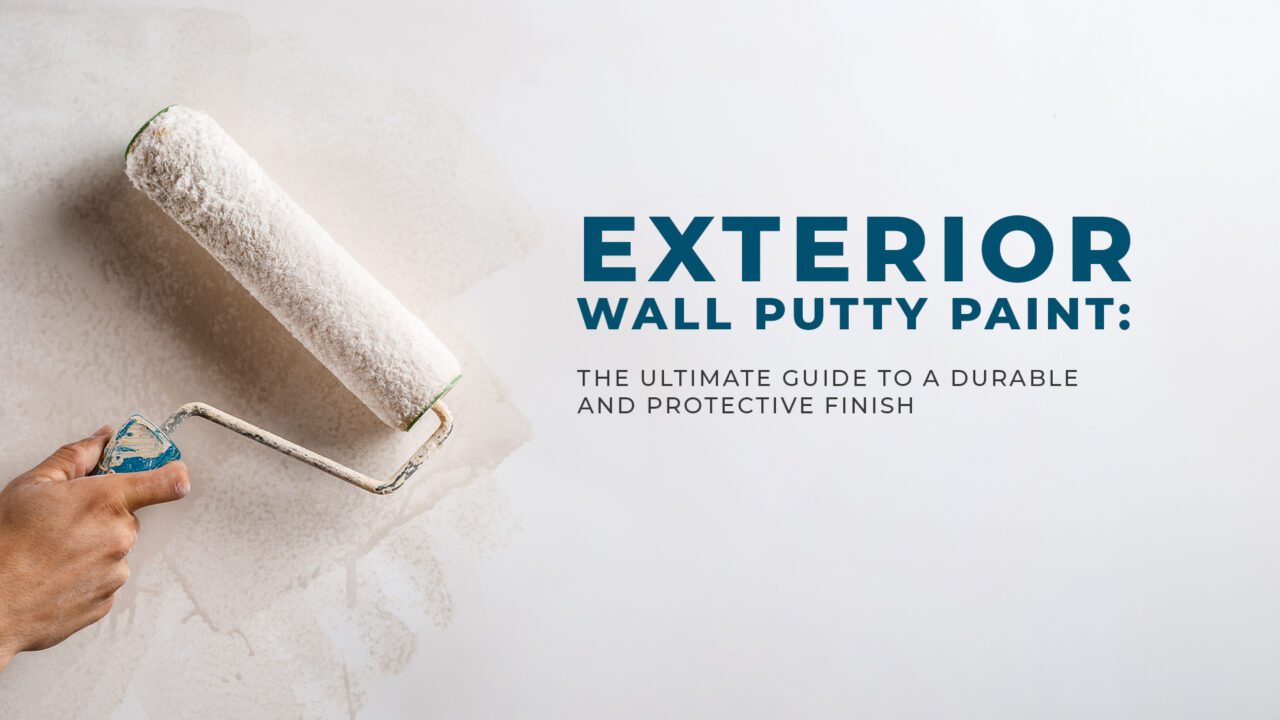Let’s Talk About Wall Putty
If you’re planning to paint your home—or even just refresh a room—there’s something you might be overlooking: wall putty.
Now, before you scroll past, hear me out. Using the best wall putty isn’t just some “extra step” painters throw in for fun. It’s what gives your walls that smooth, crack-free, magazine-worthy finish. And if you skip it (or choose the wrong kind), no amount of expensive paint will make your walls look good in the long run.
In this guide, I’ll walk you through what wall putty actually does, why it’s important, and how to choose the right one—without making it complicated.
Let’s get into it.
At its core, wall putty is like a prep coat for your walls. It’s usually made with white cement and applied before painting to even out the surface and fill in tiny cracks or imperfections.
Here’s what the best wall putty can do for your walls:
- Gives you that silky-smooth finish
- Helps paint stick better (and last longer)
- Covers up small dents, cracks, and rough patches
- Adds a little moisture resistance (goodbye peeling paint!)
- Makes the color of your paint pop more evenly
So yes—it’s not just a nice-to-have. It’s a must-have if you want beautiful, durable walls.
How Do I Choose the Best Wall Putty?
Don’t worry—you don’t need to be a contractor to figure this out. Here’s what to look for:
Smooth finish: You want your walls to feel clean, not gritty
Strong bonding: So your paint doesn’t bubble or flake off
Moisture resistance: Especially in kitchens, bathrooms, or humid climates
Durability: You want it to stay smooth, not crack in 3 months
Surface compatibility: Make sure it works with your wall type (cement, plaster, drywall, etc.)
Also, here’s a pro tip: Stick with trusted cement manufacturers. Their wall putties are usually more reliable and tested with their other cement products.
Which Type of Wall Putty Is Right for Me?
There are mainly two types, and here’s the difference in plain English:
1. White Cement-Based Wall Putty
- Super strong and long-lasting
- Works great for both indoor and outdoor walls
- Best if you’re doing a full renovation or want that professional finish
2. Acrylic Wall Putty
- Comes ready to use (less mixing!)
- Best for interiors and quick fixes
- Not as durable, especially for exterior walls
If you want to play it safe and invest in quality, go with a cement-based product. It’s the gold standard for a reason.
Can Wall Putty Fix Cracks and Damp Spots?
Yes—but only to a point. It’s great for small cracks and smoothing out rough areas. But if your wall has major damp issues or big cracks, wall putty won’t magically fix those.
Here’s what you should do:
- Fix the moisture issue first (don’t just cover it)
- Use a moisture-resistant cement product as a base
- Then apply the best wall putty for a flawless finish
Think of putty like makeup—it looks best when the skin underneath is healthy.
How Do I Apply Wall Putty Without Messing It Up?
Good news: You can do this yourself if you’re into DIY. Here’s how to apply wall putty properly:
- Clean the wall – Dust, dirt, or old paint? Get rid of it.
- Mix it well – You want a creamy, lump-free texture.
- Apply the first coat – Use a putty knife and go smooth, not thick.
- Let it dry – Be patient. Give it 6–8 hours or overnight.
- Apply a second coat (optional) – If you want that ultra-smooth look.
- Sand it lightly – Once it’s fully dry, use fine sandpaper for a pro finish.
If this feels like too much, don’t worry—your local painter knows the drill. Just make sure they’re using a quality product from a good cement manufacturer.
Do Brands Really Matter? Or Is Wall Putty Just Wall Putty?
They matter—a lot. Cheap wall putty might save you a little now, but it can lead to peeling paint, cracks, or uneven textures down the road.
Go with well-known cement manufacturers who are known for their full range of cement products. Their putties are tested for performance and usually come with better customer support and usage guides.
It’s like buying a good foundation for your face—cheap stuff shows, and not in a good way.
Is Wall Putty Safe for My Home?
Most modern wall putties are totally safe, especially if you’re buying from reputable brands. Many now come with:
- Low VOCs (less harmful fumes)
- Non-toxic, environment-friendly ingredients
- Safe for kids and pets once dry
Still, double-check the label—or ask your dealer—if you’re concerned.
Final Thoughts:
Here’s the truth: You don’t need to know everything about construction to get walls that look amazing. But skipping wall putty—or choosing the wrong kind—can cost you time, money, and a whole lot of repainting.
So take that small extra step:
- Choose the best wall putty you can afford
- Stick with well-known cement manufacturers
- Make sure it matches your wall type and needs




